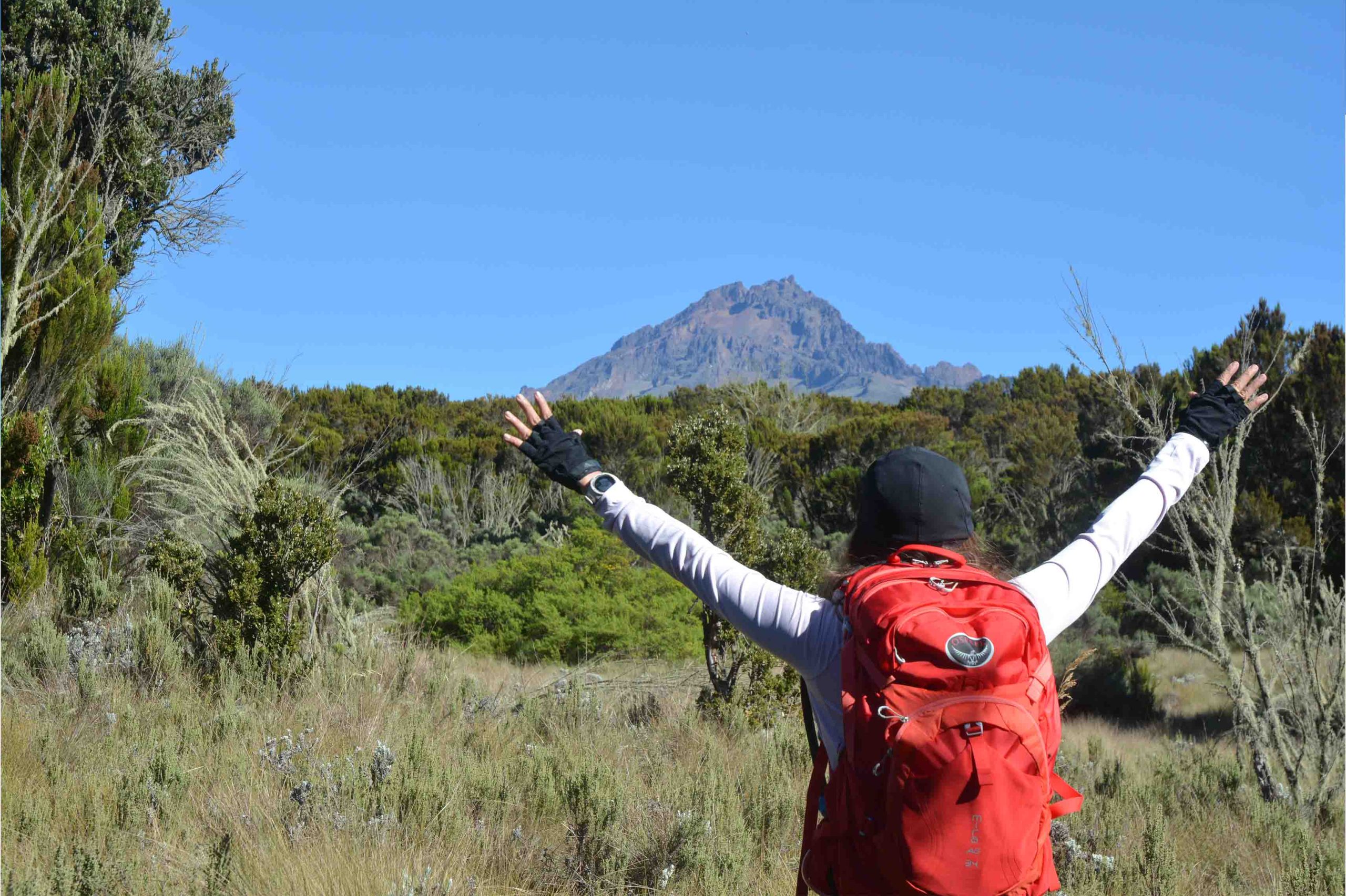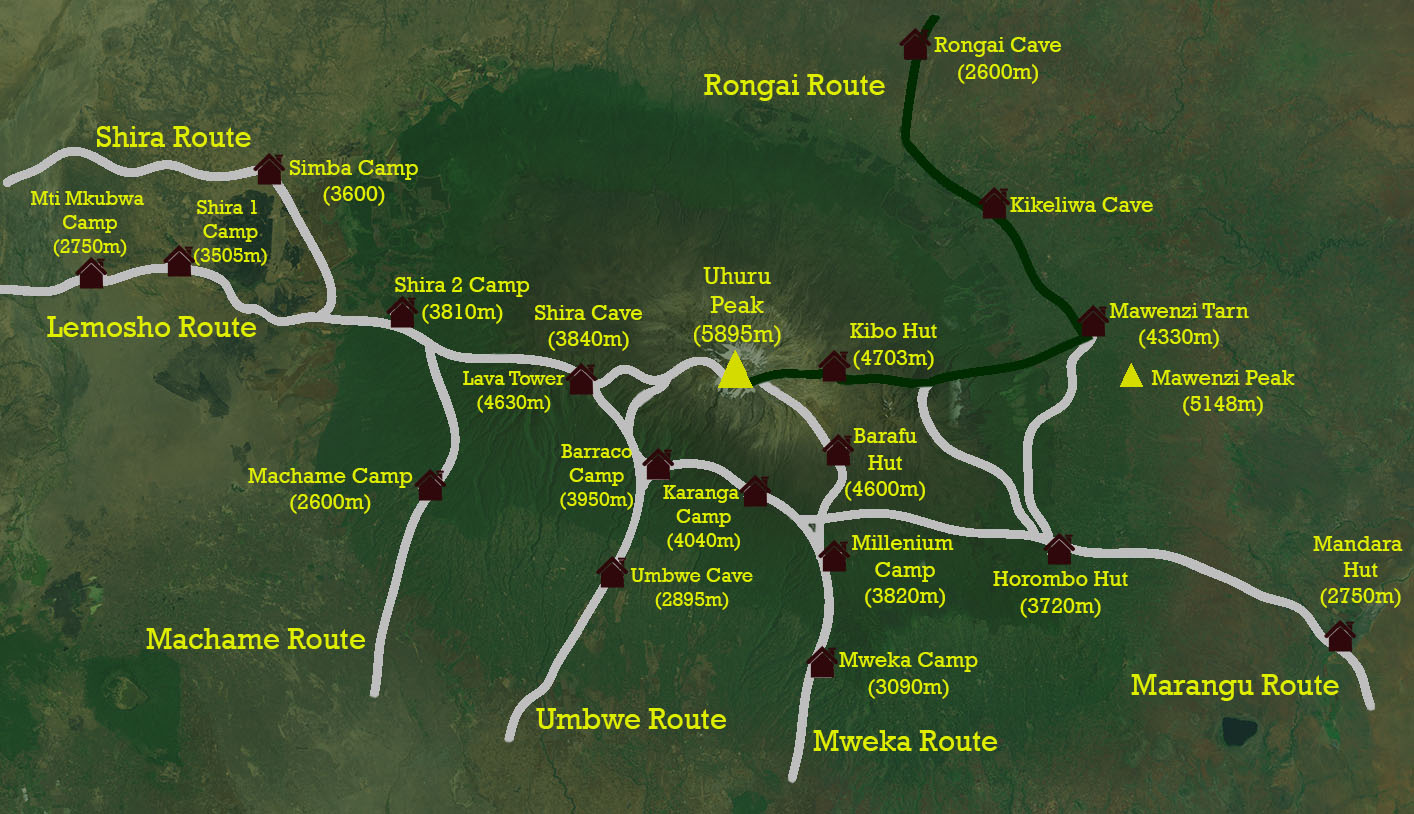7 Days Rongai Route
Tour Overview
Rongai is the only route on Kilimanjaro that approaches the mountain from the North. This route requires longer transport and it is less visited, so it can cost a bit higher than the others. You can finish Rongai route in 6 or 7 days, but note that shorter trek does not offer acclimatization day to accommodate high altitude conditions. This route might be not as attractive as Machame or Lemosho, but it offers amazing view of Mawenzi and Kibo Peak. The success rate is relatively high, with 70% – 80% chance to reach Uhuru Peak. Rongai has gradual and easy path, with a very steady rise, and its is much drier than any other route on the mountain, so you should not expect much rains on your climb. The sleeping is in tents, in a very well organized camps. Descend is at Marangu Gate.How fit do you need to be to climb Kilimanjaro?
Taking on the challenge of climbing Kilimanjaro is no small feat, primarily due to the high altitude, the pace of ascent, and the varying temperatures you’ll encounter. On an average day of the trek, you can expect to hike for six to seven hours. However, if you maintain good health and fitness, reaching the summit is entirely achievable. There are several strategies you can employ to enhance your chances of success and ensure a rewarding experience throughout the journey.
- First and foremost, patience is key. Avoid rushing your hike; allowing your body ample time to adapt and acclimatize is crucial for your well-being.
- Preparation is essential. Being physically fit will significantly ease the climbing process. Engage in hiking several months prior to your expedition, focusing on multi-day hikes for optimal training.
- Additionally, incorporating running and aerobic exercises into your routine will further prepare you for the ascent. Consider adding an extra day to your itinerary. It’s challenging to predict who might experience altitude sickness, but by extending your climb by an additional day, you can mitigate this risk. Spreading the trek over more days allows your body to acclimatize more effectively to the higher elevations. We strongly recommend this approach to maximize your chances of reaching the summit.
BOOK THIS TREK
Included
- Professional, experienced, mountain guides
- Transportation in a 4×4 safari vehicle
- All meals while on the Mountain
- Arrival and Departure transfers
- Guides, Porters, cook salaries and park fees
- Quality Mess tents with table and chairs
- Large portions of fresh, healthy, nutritious food
- Clean, purified drinking water
- Crisis management and safety procedures
- Rescue fees
- All national park fees
- Fair and ethical treatment of porters
- Flying Doctors insurance (AMREF) during the safari
Excluded
- International Flights
- Alcoholic and soft drinks
- Visa fees
- Tips
- Personal spending money for souvenirs etc.
- Travel insurance
Day 1
Rongai Gate to Simba Camp
- Distance: 6km
- Hiking Time: 3-4 hours
- Habitat: Montane Forest
You will be driven from your hotel in Arusha or Moshi for about 5 hours to the Rongai Gate near the Kenya border. After registering at the gate, we take the first hike through forests where you may see and hear wildlife. Eat lunch on the trail before continuing to the first campsite. Rongai ascends via the less forested northern side of the mountain.
The Rongai Route is one of the least crowded routes on Kilimanjaro because of the long drive to the gate. The Rongai trail is thought to have the best chance of viewing wildlife.
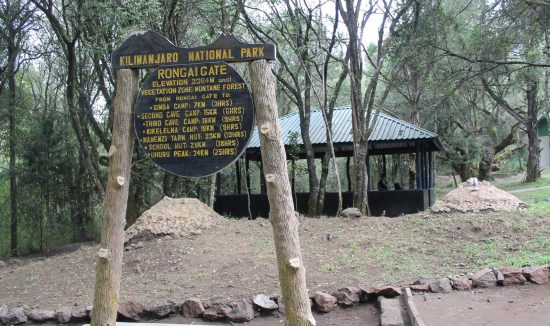
Day 2
Simba Camp to Kikelewa Camp
- Distance: 9km
- Walking Time: 6-7 hours
- Habitat: Moorland
Hike through Kilimanjaro’s moorland. The Rongai route is relatively short and steep, making for shorter hiking times. During the hike, view Mawenzi Peak ahead.
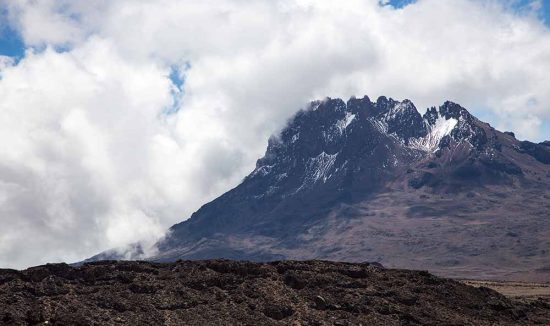
Day 3
Kikelewa Camp to Mawenzi Tarn Camp
- Distance: 6km
- Walking Time: 4 hours
- Habitat: Moorland
This more leisurely acclimatization day starts with a morning hike followed by a rest in the afternoon and evening. The hike is relatively short but steep. The Mawenzi Tarn campsite is situated below Mawenzi Peak and offers stunning views of both Mawenzi and Kibo.
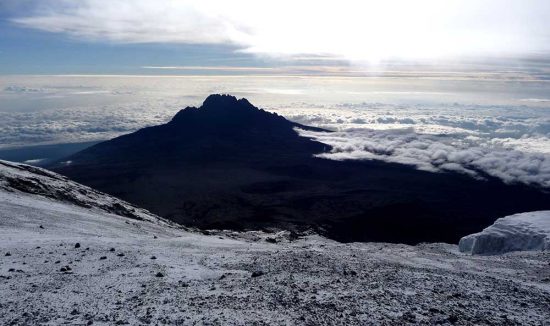
Day 4
Mawenzi Tarn Campsite
- Habitat: Alpine Desert
This is an acclimatization day at Mawenzi Tarn. We advise you hiking a bit higher this day before returning to Mawenzi Tarn in the afternoon.
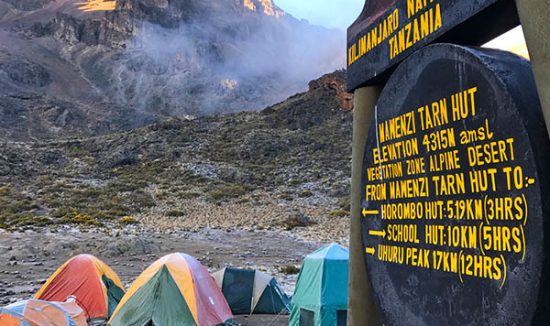
Day 5
Mawenzi Tarn Camp to Kibo Camp
- Distance: 4km
- Walking Time: 3 hours
- Habitat: Alpine desert
Cross the lunar landscape of the saddle on this day to arrive at the final campsite. Kibo Camp is situated directly below the Kibo cone, giving you stunning uninterrupted views of your final destination.
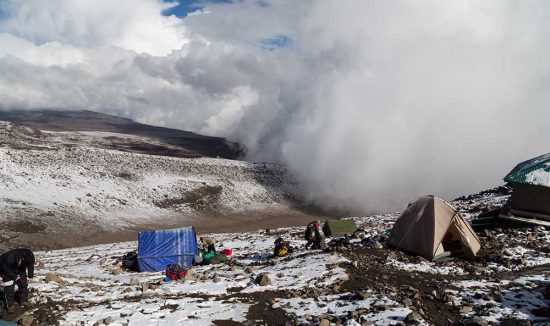
Day 6
Kibo Camp to Uhuru Peak to Horombo Hut
- Distance: 6 km ascent/16km descent
- Walking Time: 6-8 hours
- Habitat: Stone scree and ice-capped summit
Around midnight, begin the final ascent to Uhuru Peak, the highest point in Africa. Hike by the light of your flashlight for the next six hours. The ascent to the crater rim is the most challenging part of the entire trek. The trail is very steep until you reach the crater rim at Gilman’s Point.
The hike from Gilman’s to Uhuru Peak is a gradual climb and, as far as hikes go, not very difficult. The altitude, however, makes the hike long and tiring. The crater rim hike takes about two hours. Upon reaching Uhuru, take photos of your guide and group at the peak before beginning the descent to Horombo Hut.
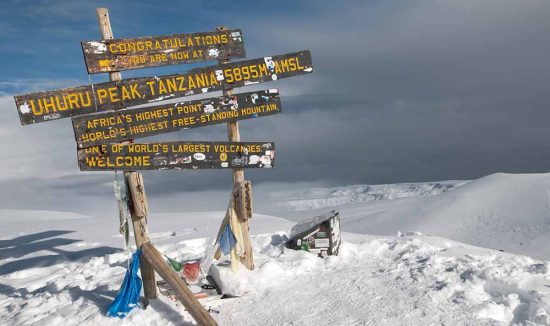
Day 7
Horombo Hut to Marangu Gate
- Hiking time: 6 – 8 hours
- Distance: 20km
- Walking Time: 5-7 hours
- Habitat: Moorlands
After breakfast, finish the trek with a descent to Marangu Gate. Your last hike on Kilimanjaro is a beautiful one, passing through Kilimanjaro’s cloud forest. Watch your step during the descent, as the trail can be slippery. Our vehicles will be waiting at Marangu Gate to take you back to your hotel.
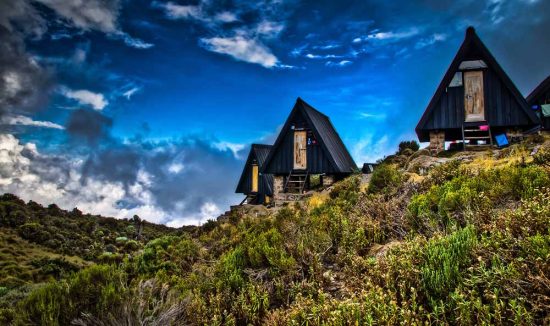
Why Kalaita Adventures?
- Bespoke Services
- Shortest response time
- Tanzania Safari Experts
- 100% local staff
- Highly experienced guides
- Affordable pricing options
